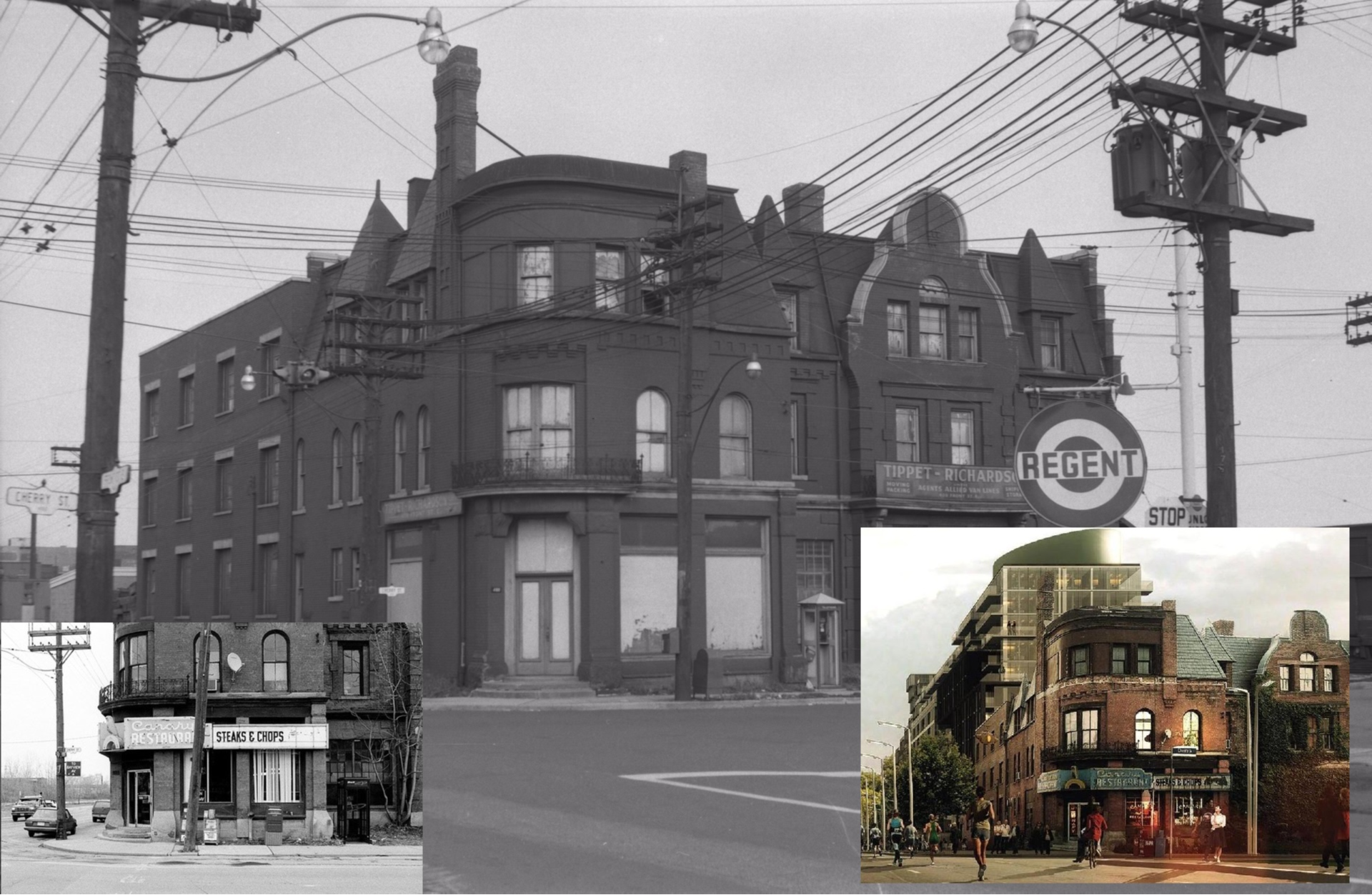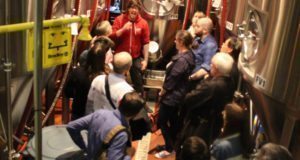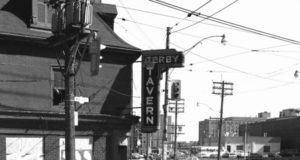 Bruce Bell –
Bruce Bell –
Toronto’s Corktown neighbourhood (south side of Shuter St. to the north, the Lakeshore to the south, River St. to the east and Berkeley St. to the west) began during the era of mass immigration thanks in part to the railroad during the mid -19th century when Toronto was flooded with newly arrived Europeans looking for a better way of life.
The vast majority of these immigrants were Irish Catholics arriving here with nothing but the clothes on their backs. At the same time Toronto was experiencing a boom-and-bust economy making many of the working class vulnerable to malnutrition and relying on contaminated water which lead to cholera outbreaks.
Teeming slums bursting with 1-room shacks holding 30 people each began to spring up in the back alleys of the newly nicknamed “Corktown.” Centering on King and Parliament streets it was named after the Irish port city of Cork however a misconception still lingers that the area is so-named because there were once a few cork-bottle stoppers factories in the area.
With their arrival, after fleeing the Great Potato Famine back home, Toronto’s population almost doubled and by the late 19th century one out of every three people living in Toronto was then of Irish background. Although some of Toronto’s wealthiest and oldest families were of Irish descent they were Protestant and the newly arrived Irish Catholics were not greeted warmly by the old guard.
Just like back in Ireland,Protestant and Catholic Irish lived separately and often took to battling in the streets.
At the heart of Corktown where the Derby loft/apartment building now stands (393 King E. at Parliament) was once the site of the Derby Tavern. Built in 1846, generations of mill workers on their way home from a long day toiling at the various factories and mills in the area would stop off at the Derby. To have heard an old Irish ballad sung decades ago in that tavern by someone who had just arrived from Ireland after leaving his home, his land, his mother and family and deliver it with such utter despair and hope for a better world beyond this one must have been mesmerizing.
The echoes of those Derby tenors who never sang at the Massey Halls of this world are slowly fading into the dust of time.
So it gets me wondering why is Ireland Park, the memorial to the approximate 40,000 mostly Catholic Irish immigrants who came to Toronto in mid 19th century, down on the waterfront and not in Corktown. For in those days the present-day Harbourfront was under water until 1928.
Thankfully there is a smaller yet equally poignant tribute in Corktown mounted on the Pieta statue near the steps of St. Paul’s Basilica on Power Street to the suffering Irish and to the man who gave his life caring for them. After tending to the newly arrived immigrants, Father Michael Power first Catholic Bishop of Toronto, contracted typhus and died on Oct. 1, 1847.
Yet in the midst of blight and suffering there were some bright spots including one my favourite buildings in Corktown, the former Palace Street School, built in 1859, which many of us remember as the Canary Restaurant at Front and Cherry streets. The school, one of the earliest free schools in Toronto and the first school to hire a female principal, is the only one remaining of the original schools built by the Toronto Board of Education.
It’s also one of the few surviving buildings built by Joseph Sheard, who as a young 25-year-old apprentice to the great architect Thomas Storm, refused to build the scaffold to hang Lount and Matthews in the aftermath of the Rebellion of 1837. This act of defiance made Sheard a folk hero to the people of Toronto who would eventually elect him mayor in 1871.
The school moved out in 1890, the school vacated its premises and the building with its additions became home to the Cherry Street Hotel.

The original Tippet-Richardson building and it’s two later incarnations
In 1893, the publication Toronto, the Queen City of Canada wrote: “A well known and popular hotel in this city is the Cherry Street Hotel, Mr. J.J. Darcy, proprietor, situated at the comer of Cherry and Front Street. The building, a commodious brick structure, was originally a school house for a period of 45 years.
The hotel contains upwards of 40 neatly furnished sleeping rooms, a well equipped dining room and office. The very best to be obtained in the market is served daily in the dining room, and in the well kept bar can always be found the choicest imported wines, liquors, ales, beer, porter, stout and cigars.”
Over the next few years the hotel changed hands and names including the Irvine House and the Eastern Star Hotel. Then it became the General Steel depot, the Tippet-Richardson warehouse; then in 1965 Canary Restaurant moved in. This summer Toronto and Corktown in particular will host the Pan American Games with the former Palace Street school being very much at the centre of the action as it has just completed a massive top to bottom renovation. The whole area surrounding the former school has transformed into the Athletes Village. Then upon completion of the Games the area will be given back to the city.
The Canary Restaurant, owned and operated by the Vlahos family for 42 years, closed in 2007. However the neighbourhood that surrounded it has been given the name Canary District after the historic eatery.
 TheBulletin.ca Journal of Downtown Toronto
TheBulletin.ca Journal of Downtown Toronto


